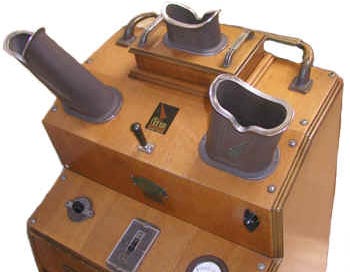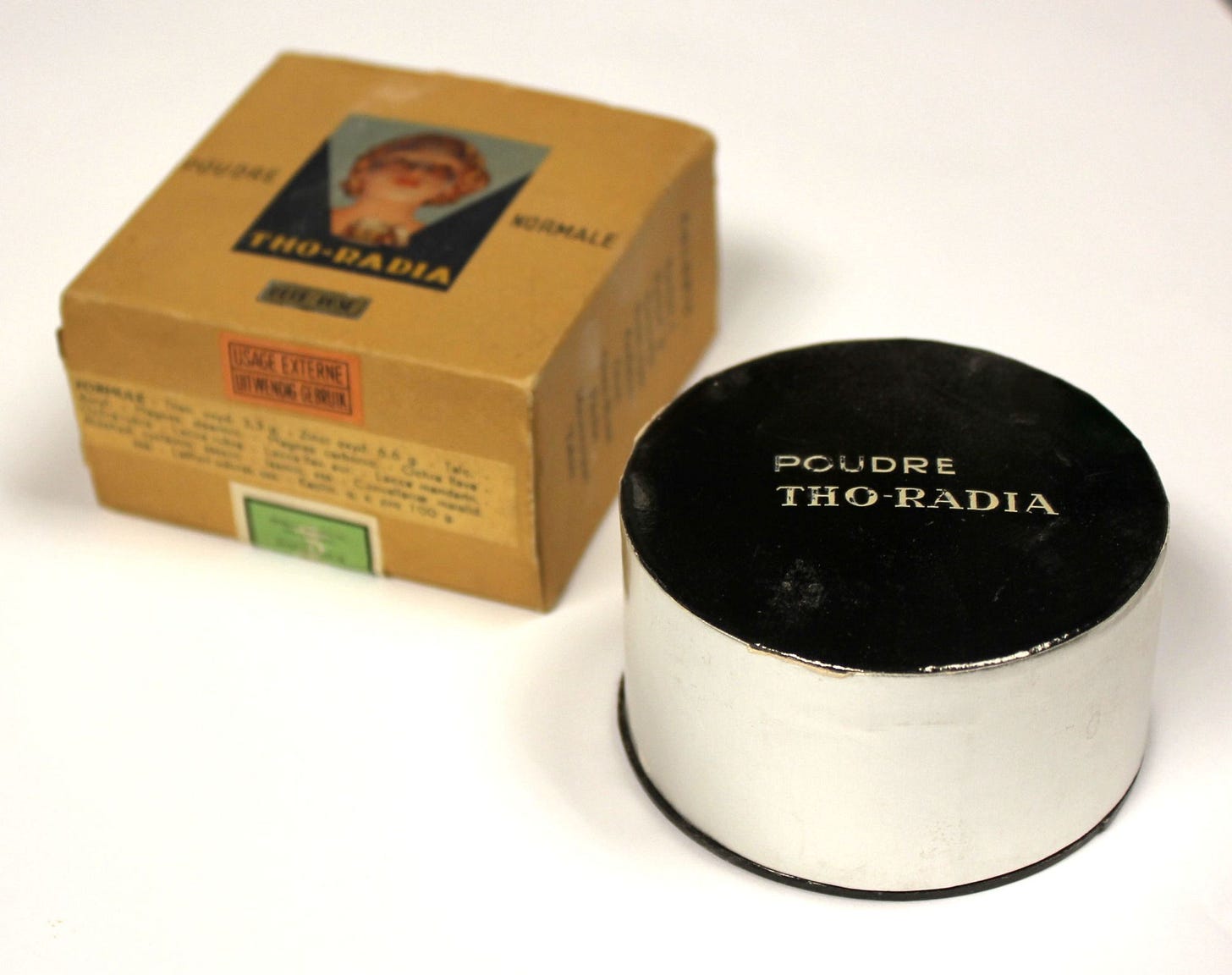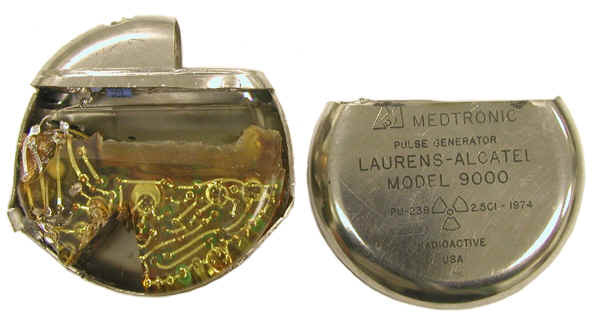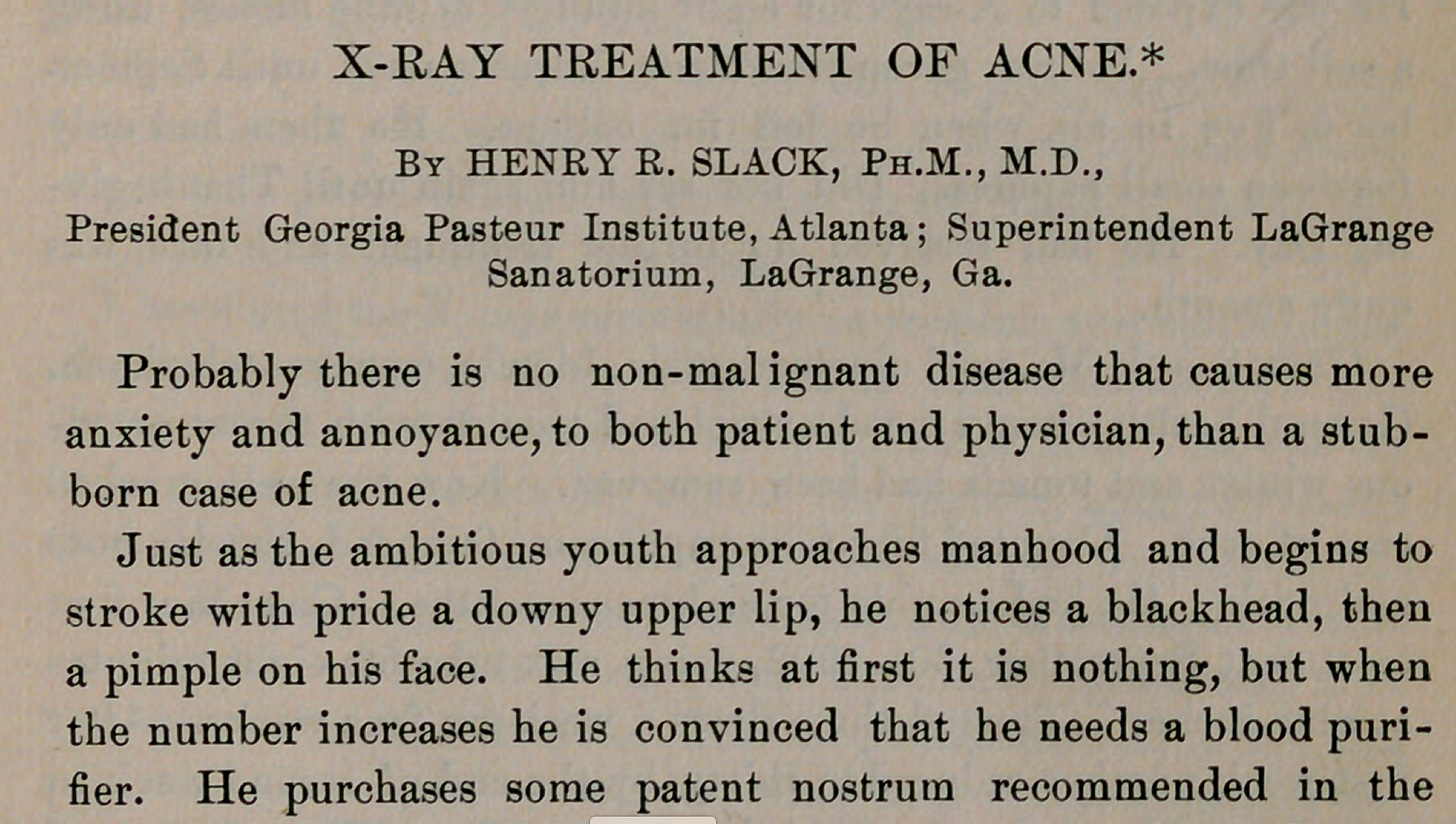I’m working on a longer piece right now about the parallels between artificial intelligence and nuclear technology—not in terms of how they work, but how society responds to them when they’re new, powerful, and poorly understood.
Spoiler: we're repeating the same mistakes.
Long before anyone worried about AI taking over the grid or replacing jobs, we were cheerfully putting radioactive isotopes into toothpaste, pacemakers, dinnerware, and even children’s science kits. Innovation ran far ahead of regulation. Safety was an afterthought. The hype was blinding.
Sound familiar?
As a preview of the full article, here’s a walk through eight real examples of when nuclear and radiation technologies were unleashed without restraint. They’re funny. They’re horrifying. And they should be a cautionary tale for anyone watching the AI boom today.
These gems are from the pre-NRC, pre-IAEA, "try it and see what glows" era of technological development—proof that the line between innovation and idiocy is sometimes thinner than a radium dial. Note: the images are taken from websites with more details - click on them to learn more.
🥿 1. X-Ray Shoe Fitting Machines
Years Active: 1930s–1950s
The Pitch: “Custom-fit shoes using futuristic X-rays!”
The Problem: Children got blasted with up to 20 R per session—no shielding, no training, no dosimetry.
The Fallout: Burns, tissue damage, increased cancer risk. Eventually banned after decades of use.
“Stand still while we radiate your bones. It’s for fashion.”
“In the early 1950’s, estimates placed the number of operating units in the United States, the United Kingdom and Canada at 10,000, 3,000 and 1,000 respectively.”
🍽️ 2. Fiesta Ware (Uranium-Glazed Dinnerware)
Years Active: 1936–1972 (and some collector pieces today — including my house)
The Pitch: Vibrant, trendy colors using uranium oxide in the glaze. Keep in mind that the red color attributed to natural or depleted uranium is not limited to Fiesta Ware. Almost any antique manufacturer creating bright orange or red color dinnerware is linked to uranium. Check out this old article from the New York Times.
The Problem: The plates are radioactive. Some pieces measure over 10,000 CPM. Do not use them outside of the Geiger Muller domes in my class. Please.
The Fallout: Harmless for display, but don’t microwave your leftovers on it.
Nothing says “mid-century modern” like detectable radiation at your dinner table.
But guess what, it still made it into 10 CFR 40.13 as “Unimportant quantities of source material.”
🧴 3. Radium Toothpaste and Skin Cream
Years Active: 1920s–1930s
The Pitch: “Energize your cells with the power of radium!”
The Problem: Chronic radiation exposure to mouth, jaw, and skin.
The Fallout: Users suffered from ulcers, bone necrosis, and long-term health damage.
Your teeth won’t just shine—they’ll disintegrate.
Remember the time you wake up and feel the need to use Tho-Radia? Containing not one, but two radioactive elements: thorium and radium. Both linked to cancer. Check out the CNN article linked to the image. It’s one thing to use x-rays to treat cancer…it’s a whole another level of presumptuous ignorance to use alpha particles for skin exfoliation.
💀 4. Radithor: The Radioactive Energy Drink
Years Active: 1925–1932
The Pitch: Bottled water with added radium isotopes. Guaranteed to cure everything. You think Prime is expensive…try shelling out $1 in 1920 (or $16 bucks today) for one of those refreshing bottles.
The Problem: It worked about as well as drinking Chernobyl runoff.
The Fallout: Industrialist Eben Byers drank 1,400 bottles. His jaw fell off. He died. Buried in a lead-lined coffin. (if you want the pictures of the man with no jaw - feel free to visit here. Bottom line - don’t try this at home.)
The original Red Bull. With actual wings. To heaven.
⌚ 5. Glow-in-the-Dark Radium Dials
Years Active: 1910s–1960s
The Pitch: Watches, clocks, and instruments that glowed in the dark—powered by radium paint.
The Problem: Workers (mostly women) hand-painted the dials, licking the brushes to make a fine point.
The Fallout: “Radium Girls” suffered from fatal anemia, necrosis, jaw rot (“radium jaw”), and bone cancer.
Glowing timepieces, glowing workers, glowing lawsuits.
❤️ 6. Plutonium-Powered Pacemakers
Years Active: 1970s–1980s
The Pitch: Use Pu-238 heat sources to power cardiac pacemakers for decades without replacement.
The Problem: Nuclear-powered implants weren’t exactly comforting to patients or regulators.
The Fallout: Technically successful. Politically... radioactive.
Still beating today. So is the regulatory headache. I say bring them back!
🏠 7. Radioactive Home Kits (YES, FOR KIDS)
Years Active: 1950s
The Pitch: The Gilbert U-238 Atomic Energy Lab—sold as a children’s toy. Oh, the Atomic Energy Labs…the only ones I grew up with.
The Problem: It came with real uranium ore and a cloud chamber.
The Fallout: Pulled from shelves after parents realized Little Robby could basically run a solo Manhattan Project in the basement.
Imagine giving ChatGPT-6 API access to a 5th grader. That, but with uranium.
📸 8. “Therapeutic” X-Rays for Acne, Hair Removal, and EVERYTHING
Years Active: 1920s–1950s
The Pitch: X-rays cure acne, remove unwanted hair, reduce inflammation, treat tuberculosis, and fix your sinuses.
The Problem: Repeated exposure caused radiation burns, thyroid damage, and cancer.
The Fallout: Banned or tightly regulated, but not before thousands were irradiated into early graves.
A beauty treatment brought to you by the electromagnetic spectrum of doom.
🔚 Moral of the story (and the preview of the next post)
Every one of these technologies was hailed as progress.
Every one of them was marketed before safety was understood.
And every one of them taught us the hard way: when you unleash powerful new tech without constraints, people suffer. Systems fail. Trust collapses.
Artificial intelligence today isn’t glowing yet—but it’s headed in the same direction.
If you’re serious about safety, don’t look to Silicon Valley manifestos.
Look to history.













